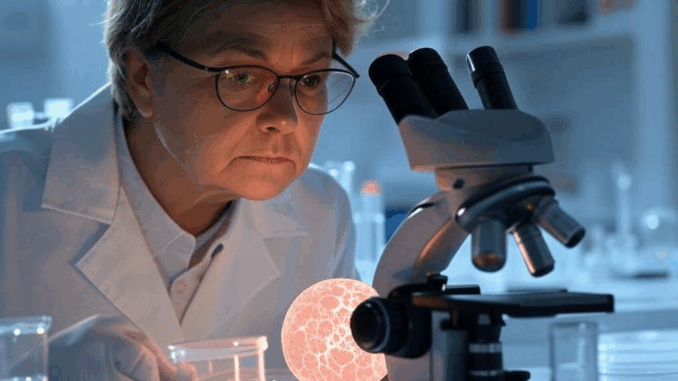
A husband-and-wife professor duo hunched over a lab bench, plotting a light-triggered attack on one of cancer’s toughest foes—that’s where the fight against aggressive breast cancer just got a whole lot smarter. Sophia and Richard Lunt from Michigan State University have teamed up with Vincent Lavallo from the University of California, Riverside, to build a cancer-killing ‘smart bomb’ powered by some seriously clever chemistry. Their target? Metastatic breast cancer—and they’re hitting it with something straight out of a superhero comic.
Sophia, a biochemistry and molecular biology pro from MSU’s College of Natural Science, and Richard, a chemical engineering hotshot and Johansen-Crosby Endowed Professor from MSU’s College of Engineering, are the power couple behind this breakthrough. Together with Vincent, a chemistry mastermind at UC Riverside, they’ve cooked up a batch of light-sensitive chemicals called cyanine-carborane salts. These little gems are the secret sauce in photodynamic therapy—PDT for short—a treatment that’s like a laser-guided missile for metastatic breast cancer tumors in mice. Best part? It leaves healthy cells alone, dodging the nasty side effects that usually come with the territory.
“Our cyanine-carborane salts are like a VIP pass for cancer cells—targeted, effective, and way easier on the body,” Sophia says with the kind of excitement you’d expect from someone who’s rewriting the rules. “We’re hoping this leads to safer, smarter options for people who’ve run out of good choices.”
Here’s the rundown on how it works: these salts get pumped into the body and sneak into cancer cells like undercover agents. Then, a blast of near-infrared light—think invisible ninja rays that can dive deep into tissue—flips the switch. Boom! The salts turn into tumor-busting bombs, taking out the bad guys while the good cells barely notice. Compare that to traditional PDT, where the chemicals hang around in your skin for weeks, turning you into a vampire who blisters at the slightest hint of sunlight. “With the old stuff, patients are stuck hiding in the dark for two or three months,” explains Hyllana Medeiros, a postdoctoral researcher at MSU who’s been testing this on mice. “It’s brutal—imagine burning up just because you peeked out a window.”
The new salts, though? They’re a game-changer. They zero in on cancer cells, do their job, and don’t overstay their welcome. “This is a legit treatment for the toughest breast cancers,” says Amir Roshanzadeh, an MSU grad student and the paper’s first author, practically buzzing with pride. “Plus, it’s cracking open doors for other cancers and even smarter drug delivery down the road.”
The team’s not stopping here—they’re itching to see if these salts can tackle other cancer types next. Richard puts it best: “Big wins like this don’t happen solo. You need a crew like ours—cancer biologists, chemists, engineers—all throwing their superpowers into the mix. That’s when the magic happens.” Picture them huddled around a lab table (or maybe the Lunt kitchen counter), blending Sophia’s cell-smarts, Richard’s engineering wizardry, and Vincent’s chemical genius into something that could rewrite the future for cancer patients.
So far, the mice are giving this a standing ovation, with tumors shrinking and side effects staying low. It’s early, but this trio’s light-activated brainchild might just be the spark that lights up hope for millions fighting aggressive breast cancer—and beyond. Who knew a little teamwork and some clever chemistry could pack such a punch?
